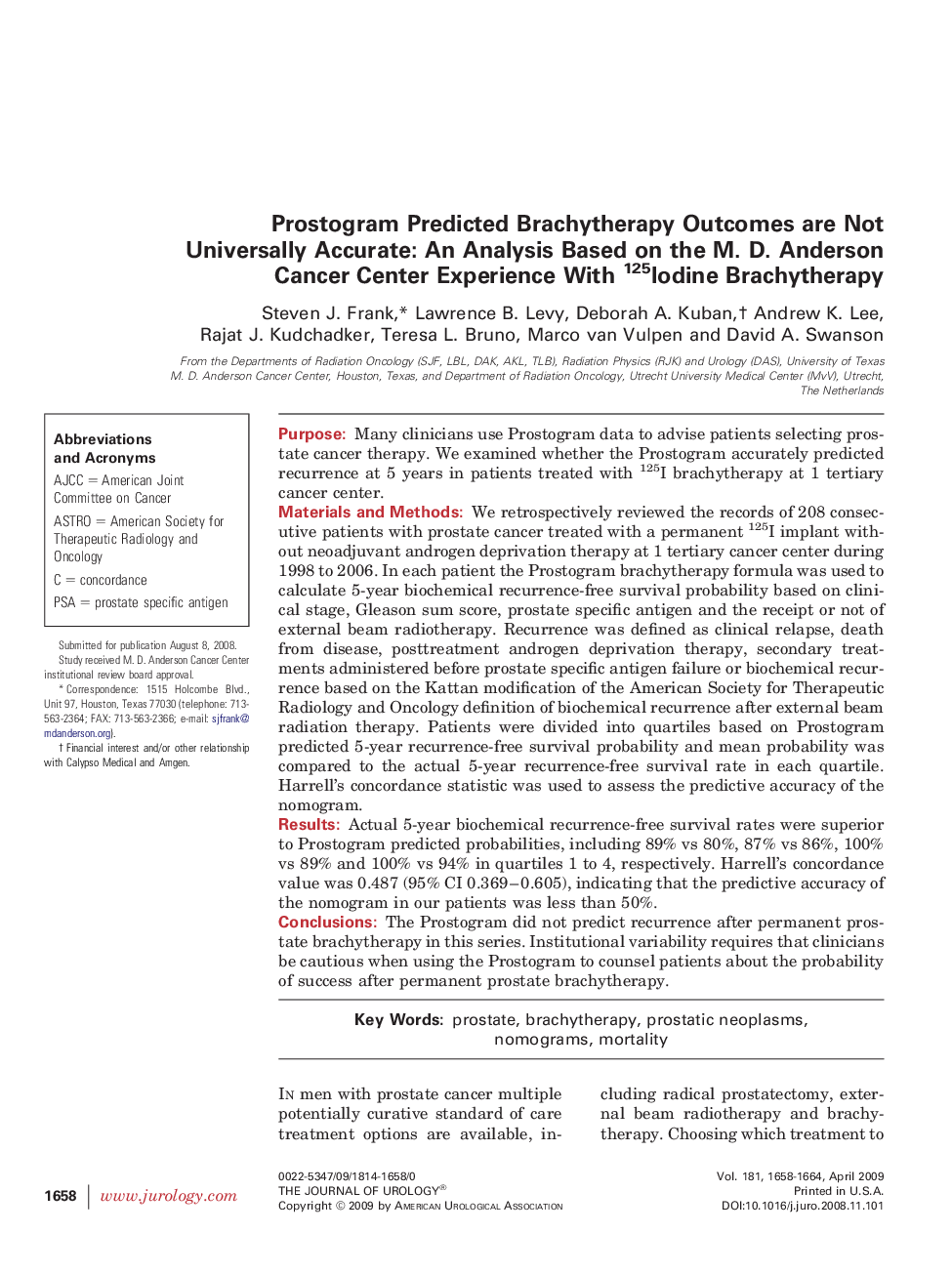| Article ID | Journal | Published Year | Pages | File Type |
|---|---|---|---|---|
| 3876151 | The Journal of Urology | 2009 | 7 Pages |
PurposeMany clinicians use Prostogram data to advise patients selecting prostate cancer therapy. We examined whether the Prostogram accurately predicted recurrence at 5 years in patients treated with 125I brachytherapy at 1 tertiary cancer center.Materials and MethodsWe retrospectively reviewed the records of 208 consecutive patients with prostate cancer treated with a permanent 125I implant without neoadjuvant androgen deprivation therapy at 1 tertiary cancer center during 1998 to 2006. In each patient the Prostogram brachytherapy formula was used to calculate 5-year biochemical recurrence-free survival probability based on clinical stage, Gleason sum score, prostate specific antigen and the receipt or not of external beam radiotherapy. Recurrence was defined as clinical relapse, death from disease, posttreatment androgen deprivation therapy, secondary treatments administered before prostate specific antigen failure or biochemical recurrence based on the Kattan modification of the American Society for Therapeutic Radiology and Oncology definition of biochemical recurrence after external beam radiation therapy. Patients were divided into quartiles based on Prostogram predicted 5-year recurrence-free survival probability and mean probability was compared to the actual 5-year recurrence-free survival rate in each quartile. Harrell's concordance statistic was used to assess the predictive accuracy of the nomogram.ResultsActual 5-year biochemical recurrence-free survival rates were superior to Prostogram predicted probabilities, including 89% vs 80%, 87% vs 86%, 100% vs 89% and 100% vs 94% in quartiles 1 to 4, respectively. Harrell's concordance value was 0.487 (95% CI 0.369–0.605), indicating that the predictive accuracy of the nomogram in our patients was less than 50%.ConclusionsThe Prostogram did not predict recurrence after permanent prostate brachytherapy in this series. Institutional variability requires that clinicians be cautious when using the Prostogram to counsel patients about the probability of success after permanent prostate brachytherapy.
